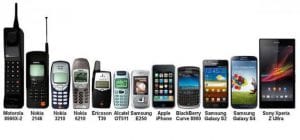Weeding! What an interesting term to use for excluding all the unnecessary resources in a school or public library collection. However all of these resources need to be properly evaluated in order to determine which physical, electronic books (e-books) or subscription services need to be removed from this collection. In one of this week’s readings Grigg (2012) identifies several methods of evaluating collections in order to determine the more relevant content that can be included in a library collection. These methods include:
- Usage data: this process highlights the importance of how often a particular resource is being used. The acronym COUNTER (Counting Online Usage of NeTworked Electronic Resources) looks at calculating the entire collection and taking into consideration the title requests, turn aways and total number of searches or sessions where someone has tried to find a particular resource.
- Overlap analysis: duplicates; that’s basically what this evaluation method is trying to maintain, particularly if there is more than one resource that needs to be removed. The librarian might then want to use EBSCO A to Z in order to make this process more efficient.
- Survey instruments: this method encourages the user or learner to provide their insight into the types of resources that they continually use and the services that they find most helpful when they visit the library. Sometimes a small incentive or reward is provided for those members that don’t think it’s helpful to provide feedback to the librarians (just remember the librarian has a job to do too you know).
- Benchmarking: making a comparison between other institutions encourages those librarians to determine how other people in a similar position evaluate the collection that they are in charge of.
- Focus groups: finding out the opinions of those people that regularly use the library is very crucial to determine what areas could be improved, removed, given less support or even funding depending on certain areas in the library (for example if the library contains study rooms that people can use and more rooms are going to be included will it benefit the people that are using them?).
- Balanced scorecard method: maintaining continual observations of the funding that goes into programs such as e-book subscriptions to ensure that the librarian can keep dropping or increasing the budget that goes into that service; depending on how much the resources are being used.
So all of these methods are great at maintaining and evaluating a library collection but some of these would work best in a public library. However for a school library, I think that usage data, overlap analysis, benchmarking and input from the balanced scorecard method will ensure that the collection is continually maintained especially during the school year. For me as a casual teacher I have the opportunity to take part in the benchmarking method (just through observation) and discover how other school libraries are set up and what types of resources are readily available for students to use. During my time as a casual teacher I have noticed that additional staff members (such as SLSO or student library monitors) assist the teacher librarian in stocktaking or returning books back to their shelves. I haven’t observed the process of stocktaking up close, only walking past the library area, but I have talked to some Teacher Librarians (TL) that are always thankful for Executive members of staffing providing them with additional release time particularly at the end of the school year. I found that the TL that I have talked to often use the usage data method in order to find out how many copies the school might have of a particular book and also ensure that they order any replacements particularly if the text has been overused.
In order to do a school library evaluation I think the benefits of the usage data and overlap method can be a quicker method to analyse which series or group of resources are being continually used in this learning area. Despite the fact that this evaluation process takes an immense amount of time, it benefits the TL as they become even more familiar with resources that either are being used continuously or not at all. This process also encourages for the TL to maintain the school library collection by ensuring that each resource provides a learning benefit as it may attribute towards a unit of work. Each unit of work may merit new learning resources such as physical books, online websites or interactive iPad apps; which should be continually evaluated according to relevance of both the topic area and when it was produced (keeping the collection current and new for different learning styles). Following these evaluation methods allows the TL to monitor and keep track of the vast variety of resources that are being used in the school library rather than letting those weeds take over!
Reference:
Grigg, K. (2012). ‘Assessment and evaluation of e-book collections’ in Kaplan, R. Building and managing e-book collections : A how-to-do-it manual for librarians. Retrieved from https://ebookcentral.proquest.com

